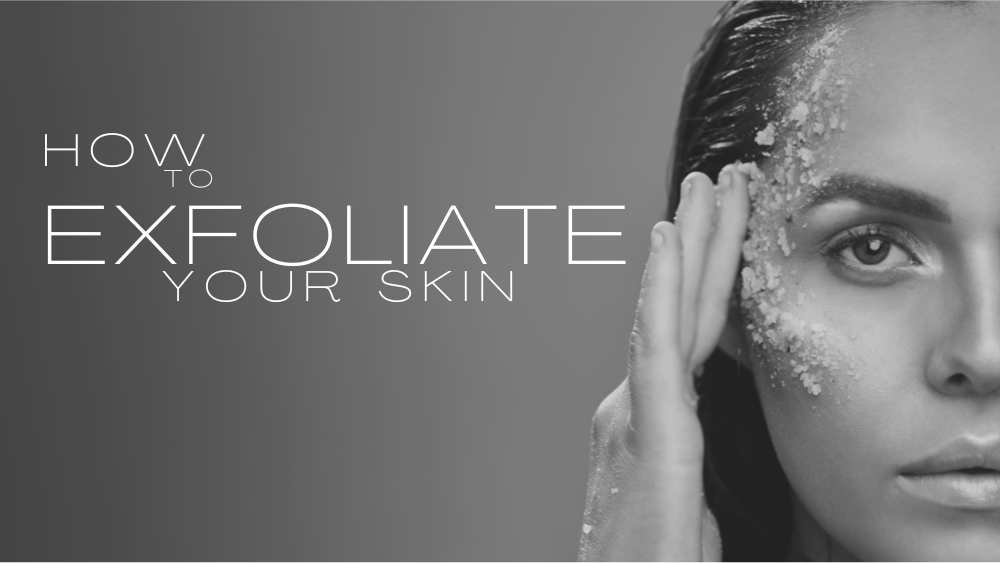How to Exfoliate Your Skin
In addition to cleansing, moisturizing, and applying lots of SPFS, regular exfoliation is one of the best ways to achieve smoother, more radiant skin. But if you’ve never tried it before, you might be asking yourself, “What exactly is exfoliation?”
Exfoliation is simply the process of getting rid of dead skin cells from the surface of your skin. When done right, it can give your skin a more even tone and make it look brighter. But, like many skincare steps, exfoliation isn’t the same for everyone. To find the best routine for your skin, it’s important to know the different exfoliating methods and their benefits.
What is Exfoliation?
It is the process of eliminating dead skin cells and buildup from the outermost layer of the skin. There are two main methods to exfoliate: physically (using a scrub or tool) or chemically (using acids or enzymes). The best way to exfoliate depends on factors like your skin type, sensitivity, and how your skin reacts. If you're unsure where to begin, it’s always helpful to consult a board-certified dermatologist.
Manual Exfoliation
Manual exfoliation, also known as physical or mechanical exfoliation, involves using a gritty substance or abrasive tool to physically remove dead skin cells. A simple example of this is gently rubbing your face with a damp washcloth. Other common tools for manual exfoliation include cleansing brushes, dry brushes, dermaplaning razors, and scrubs.
When people refer to physical exfoliation, they are usually talking about scrubs. These products contain small particles—such as fine salt, sugar, or crushed seed powders—that help slough off dead skin and debris. Some scrubs also cleanse the skin while exfoliating and can be used daily, while others are more potent and designed for weekly use, typically once or twice a week.
For a gentle exfoliation, you might try an exfoliating cleanser.
If you prefer to stick to your regular cleanser, you can incorporate a scrub into your routine a few times a week.
Chemical Exfoliation
Chemical exfoliants use exfoliating acids or enzymes to break down and dissolve dead skin cells and debris from the skin’s surface. Common exfoliating acids include beta-hydroxy acids (BHAs), like salicylic acid, and alpha-hydroxy acids (AHAs), such as glycolic acid and lactic acid. BHAs are oil-soluble and are ideal for acne-prone skin, while AHAs are water-soluble and work well for dry, normal, and mature skin types.
Just like physical exfoliants, chemical exfoliants vary in strength. Some can be used daily, while others are best applied less frequently.
The Benefits of Exfoliation
If you're still asking, "What is exfoliation good for?" here's the answer. While your skin naturally sheds dead skin cells (a process known as desquamation), this process slows down as we age. Combined with the loss of moisture that often comes with age, this can lead to dull, rough, or uneven skin. Dead skin buildup can also clog pores and lead to breakouts. Exfoliation helps to remove these dead surface cells, promoting a smoother, clearer complexion. Other benefits of exfoliation include:
- Brighter, more radiant skin
- More even skin tone and texture
- Smaller-looking pores
- Reduced appearance of dark spots and discoloration
- Less noticeable fine lines
- Fewer clogged pores and blemishes
Regular exfoliation can also enhance the effectiveness of your other skincare products, such as serums, toners, and moisturizers, allowing them to penetrate your skin more deeply.
How to Exfoliate at Home
1. Choose Your Product
The first step in enhancing your exfoliating routine is to consider your skin type and tailor your approach accordingly. If your skin is sensitive, it’s important to be gentle with exfoliation. If you're uncertain about which type of exfoliant is best for your skin, it's a good idea to consult a board-certified dermatologist.
Once you’ve figured out the right type of exfoliant for your skin, you’ll need to select a product. There are many options available, from exfoliating cleansers and toners to serums and moisturizers. Be sure to choose a product suited for your skin type and any specific concerns you may have.
2. Follow the Instructions
When it comes to how to exfoliate correctly, the instructions depend on the product you’ve chosen and your overall skincare routine. Scrubs are usually applied to damp skin and gently massaged in the shower or at the sink. Exfoliating cleansers can also be used in the shower or at the sink. Toners, serums, and at-home peels have their own specific usage guidelines. To get the best results, always read and follow the instructions on your chosen product carefully.
Start slowly to avoid irritating or over-drying your skin, and be cautious when using exfoliants on the same days as retinol or other retinoid products, as combining them can be too harsh on your skin.
3. Moisturize and Protect Your Skin
Regardless of the exfoliant you use, it’s essential to follow up with a moisturizer to help replenish your skin’s hydration.
It’s also important to note that exfoliating—especially with chemical exfoliants—can make your skin more sensitive to the sun. Be diligent about applying SPF after exfoliating. Choose a broad-spectrum sunscreen with an SPF of at least 15.

